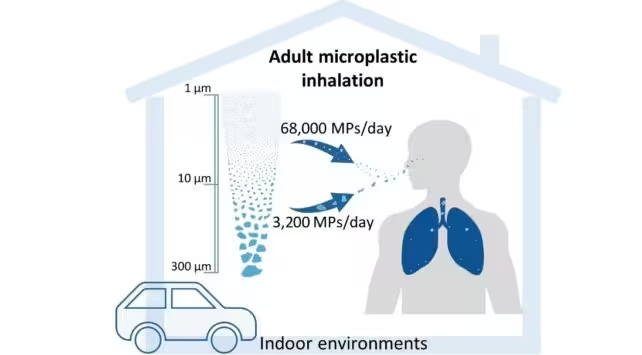3 Minutes
The Invisible Threat: Microplastics in the Air We Breathe
Plastic pollution has become one of the most pressing environmental challenges of the 21st century, infiltrating oceans, rivers, and even the human body. While many are aware of microplastic contamination in food and water, groundbreaking research from the Université de Toulouse in France has revealed that indoor air—where people spend the vast majority of their time—is a significant source of microplastic exposure.
Scientific Background: Quantifying Inhaled Microplastics
The research team set out to measure the concentration of airborne microplastic particles present in everyday indoor environments. By collecting and analyzing 16 air samples from personal apartments and vehicles, scientists employed Raman spectroscopy—a high-precision technique commonly used to identify microscale materials. The findings were striking: apartment air contained a median of 528 microplastic particles per cubic meter, while the air inside cars reached as high as 2,238 particles per cubic meter.
Importantly, the vast majority (94%) of detected particles measured less than 10 micrometers across. To put this size in context, human hair is typically 50–70 micrometers thick; particles smaller than 10 micrometers can easily penetrate deep into the respiratory system and lodge in lung tissue.
Key Findings: Far More Exposure Than Previously Estimated
Analysis indicated that adults could inhale approximately 71,000 microplastic particles every day, the majority of which are small enough to evade natural filtration mechanisms in the airways. Notably, the study found that these concentrations are about 100 times higher than earlier estimates derived from extrapolated data.
"People are typically indoors for about 90 percent of their lives—whether at home, at work, or in transit," the researchers noted. "Throughout this time, they are continuously exposed to airborne microplastics, often without any awareness of the risk."

Health Concerns and the Need for Further Research
While the exact impact of inhaled microplastics is still not fully understood, scientific consensus is building around significant health concerns. Recent studies have begun to link microplastic exposure with an increased risk of diseases such as cancer, reduced fertility, incidents of stroke, and various respiratory problems. The ability of such small particles to reach deep tissues amplifies potential health risks.
Given these alarming findings, scientists are calling for urgent and comprehensive research into the biological effects of inhaled microplastics. Developing effective methods to reduce exposure—such as air filtration technologies, improved indoor air quality standards, and mitigation at the source—will also be critical as society grapples with the long-term consequences of plastic pollution.
Conclusion
The discovery that we are breathing in tens of thousands of microplastic particles each day highlights a previously underappreciated dimension of the plastic pollution crisis. With most people spending the bulk of their time indoors and the health implications of microplastic exposure still unfolding, there is an urgent need for both scientific investigation and proactive mitigation. As research advances, increasing public awareness and robust policy responses will play a vital role in protecting human health from this pervasive, invisible threat.
Source: journals.plos



Comments